By Dan Weisz
Besides the woodpeckers, there were other birds at the waterhole. As soon as I arrived and got out of my car, the first bird I spotted was a Spotted Towhee. I watched as the Towhee flew from a tree to the ground in constant search for food. Then it ran over to a picnic table, investigated the ground, then the bench, and then it hopped onto the table.
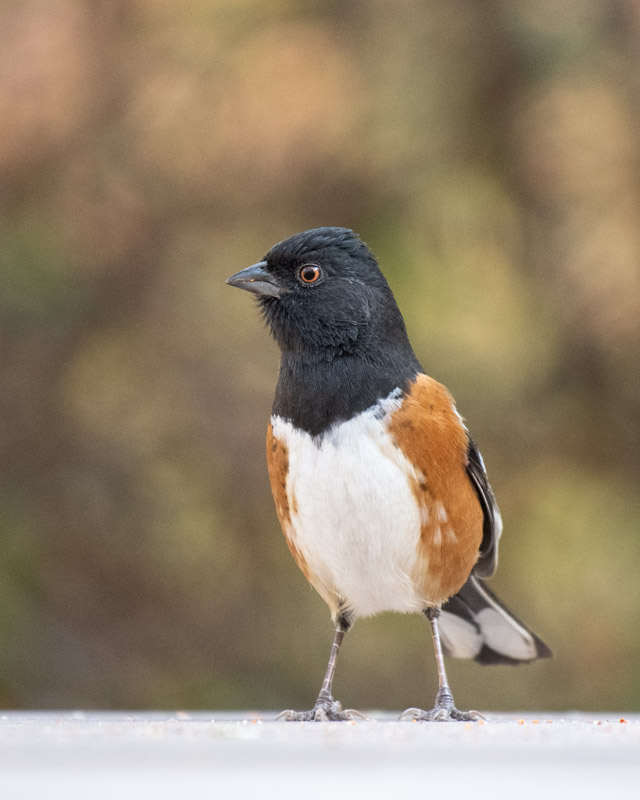
Another Spotted Towhee came towards the water feature, pausing in an oak tree first. I think he may have been just showing off his handsome plumage.
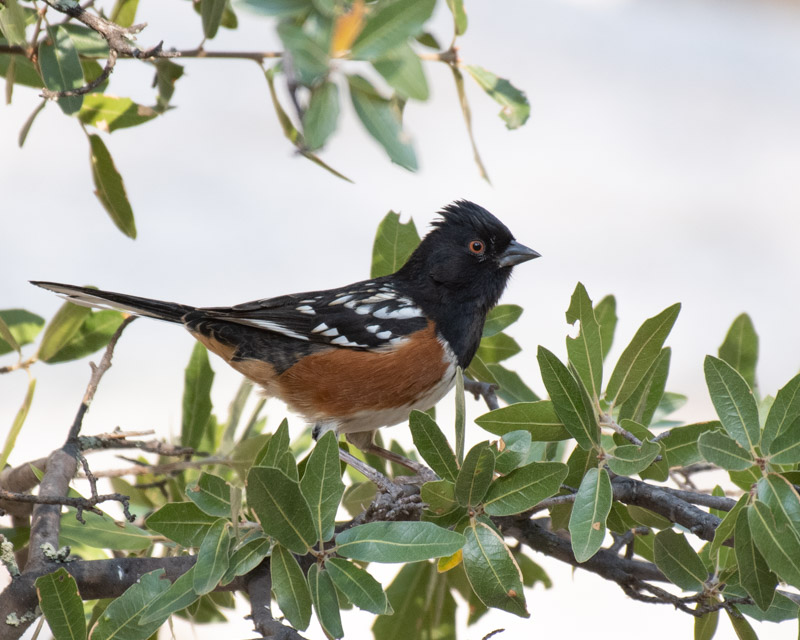
This Spotted Towhee came down to the water and perched on the rocks before dropping down into the water hole. Spotted Towhees are in southern Arizona year-round. In the summers they remain above 5000 feet elevation but in winters they can be seen in low desert areas with dense cover.
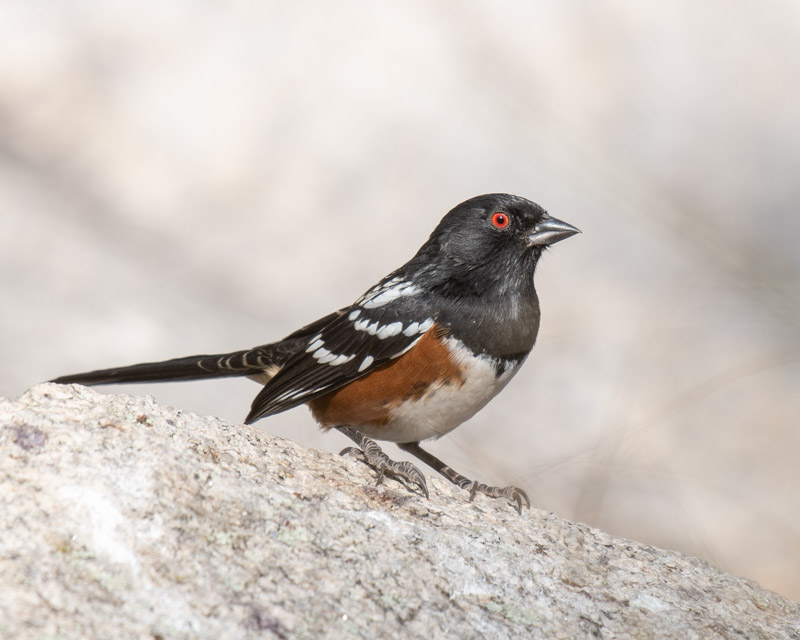
Yellow-eyed Juncos are common residents year-round in southern Arizona at elevations above 5000 feet. Unlike other juncos that are common across the United States, Yellow-eyed Juncos are another SE Arizona specialty. They are seed-eaters.
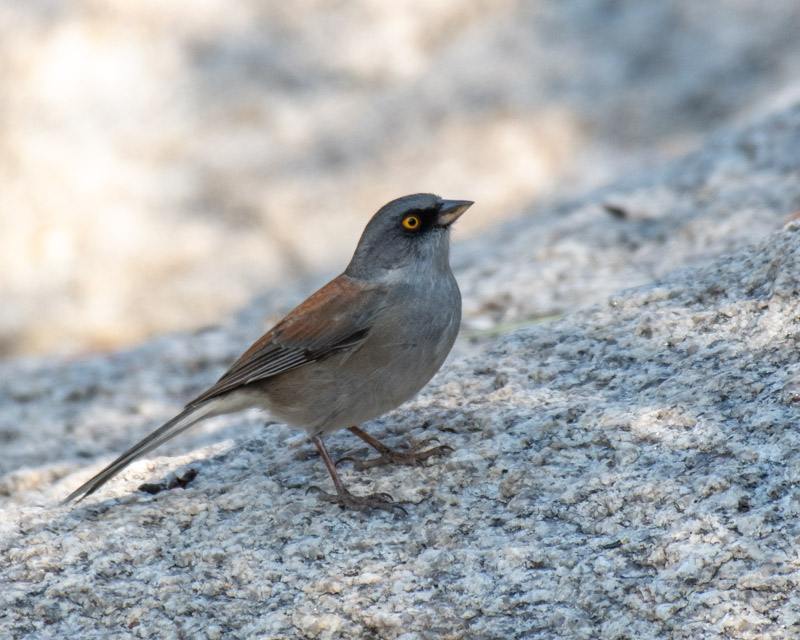
Hermit Thrushes are another bird common throughout the United States during the year and we have them in Southern Arizona year-round. In the summers, we can find them in cooler areas in the mountains but in winter, they come as low as the desert areas. Hermit Thrushes are known for their song (which they are not singing at this time of year). Birdnote gives you a chance to hear it: https://www.birdnote.org/listen/shows/hermit-thrush-ethereal-singer
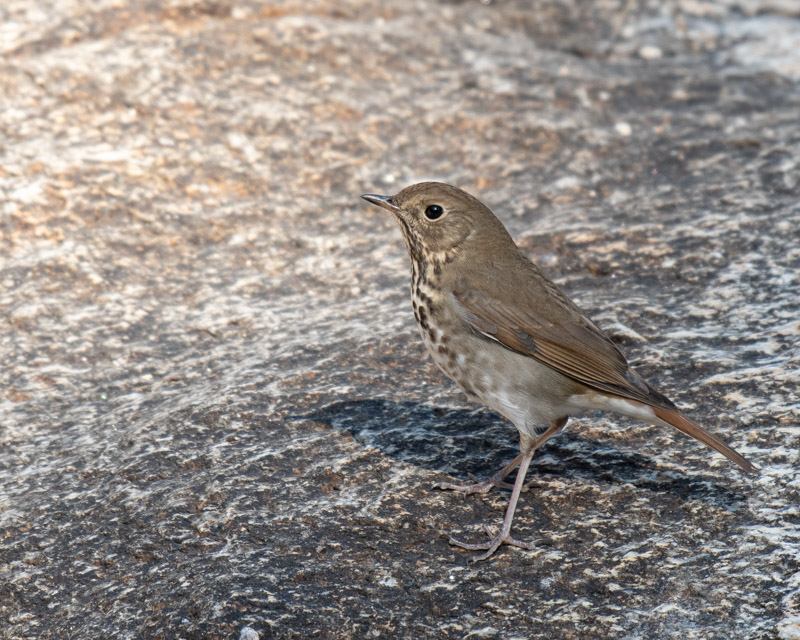
When one Hermit Thrush came closer, I was able to capture its portrait. I like the smudgy look of the spots on its breast.
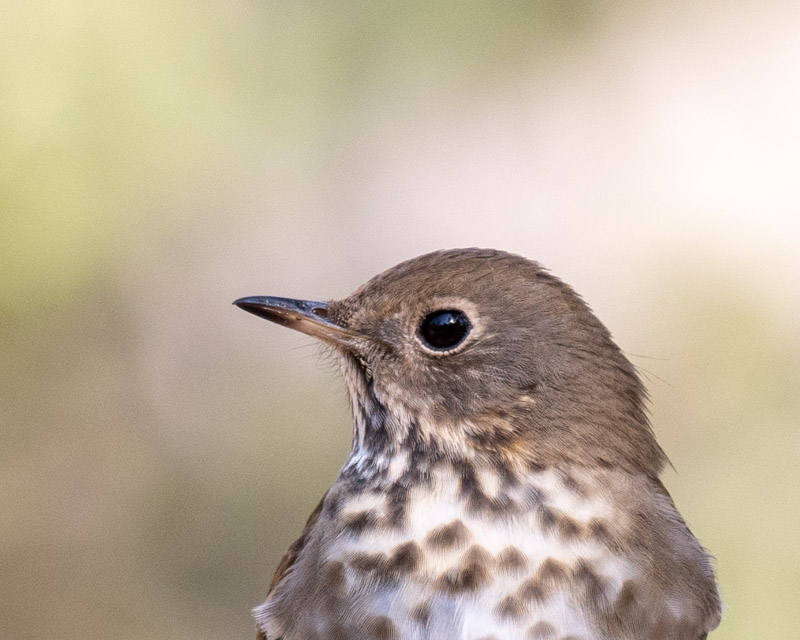
Lesser Goldfinches were at the water hole also. They are “yardbirds” for me, a constant presence at the feeder in my backyard. So when I see them in the wild it is always a treat. This one is a female.
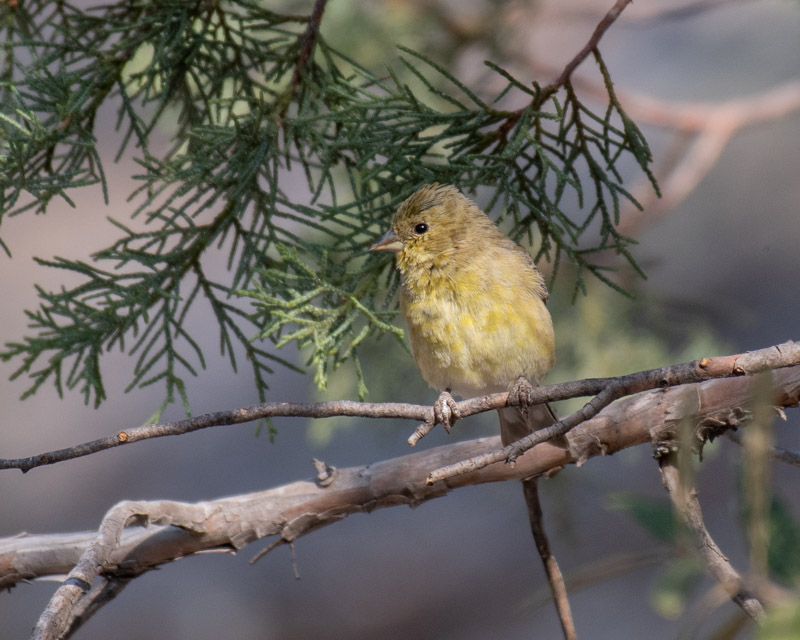
There was a small flock of Lesser Goldfinches and this male came down for a drink.
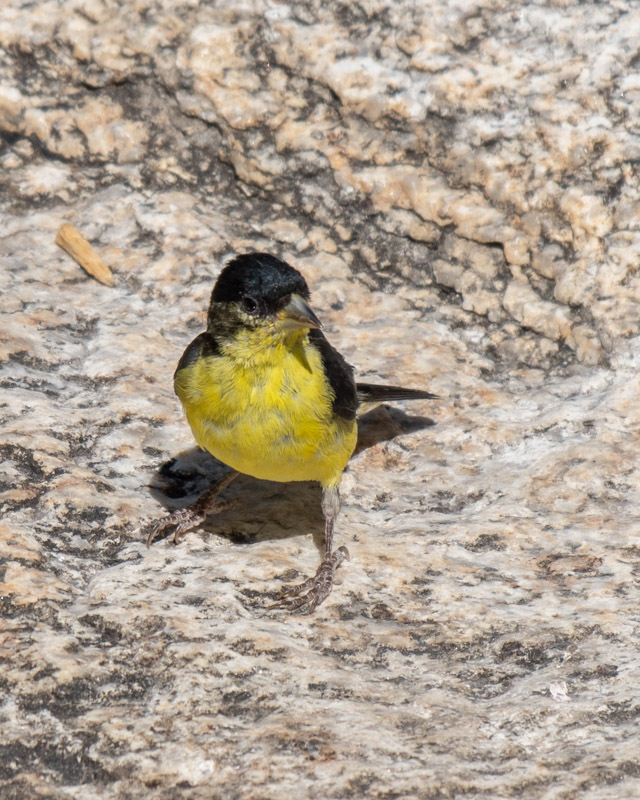
White-breasted Nuthatches are distinctive looking birds with their clean black, gray and white markings. This one might be a female as its cap appears gray. The caps on males are black. These are squat looking birds who seem to have no necks and have short tails.
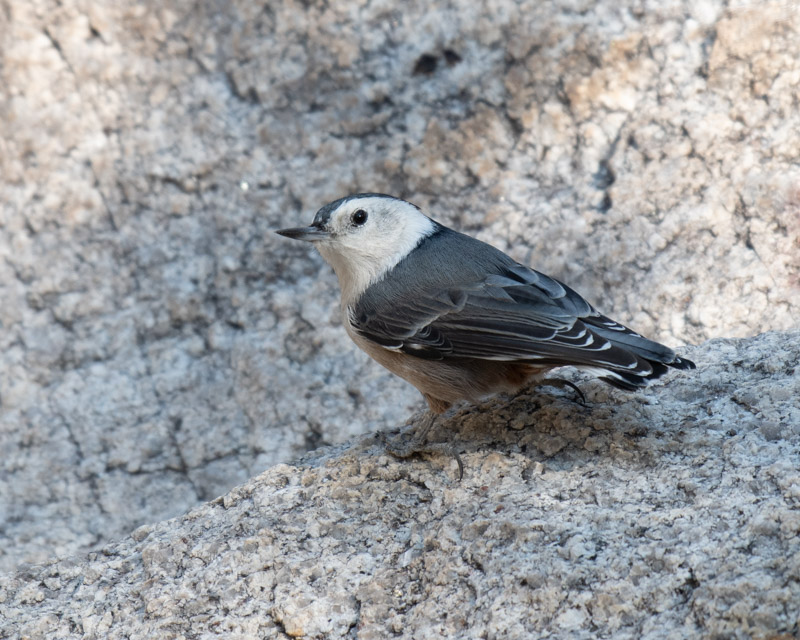
Normally you find White-breasted Nuthatches on trees, clinging to bark and moving up, down and around the trunk and branches in search of food. You can see the rusty spots near its rear and how sharply pointed the bird’s bill is.
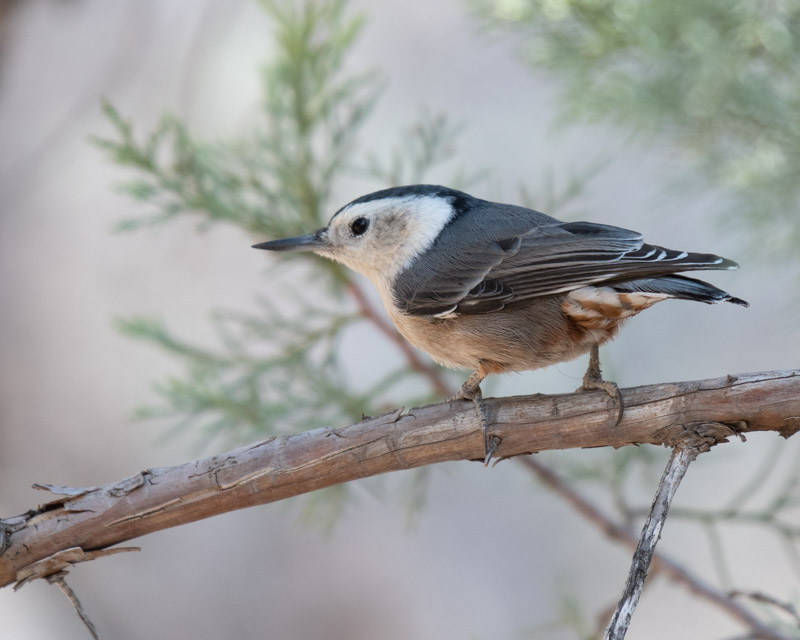
Robins are birds that most people do not associate with southern Arizona but we do have them year-round, with some wintering in lower desert areas. Our Robins’ colors are a bit more subdued than those in the East, as is true with much wildlife in our area.
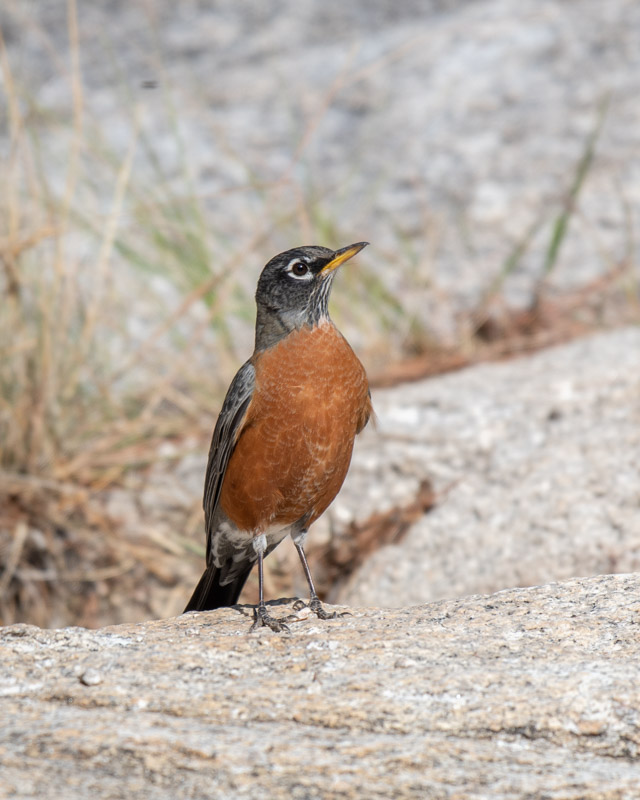
And this Robin was ready to head down to the water. This bird is interesting as it is missing its tail feathers. It probably has molted them all at once and the new feathers are just beginning to come in.
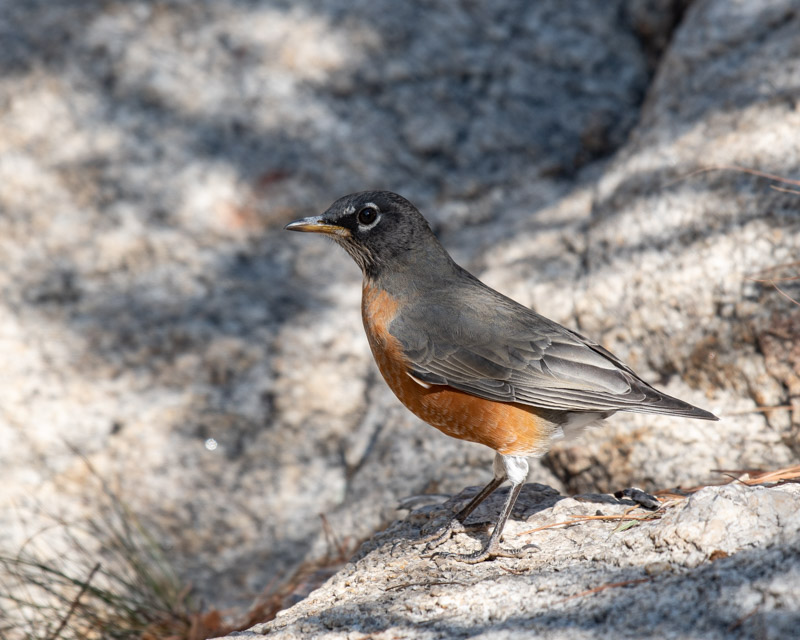
A final treat was having a small flock of Western Bluebirds arrive. This Bluebird is in the shade but its light colors and gray throat indicate it is likely a female.
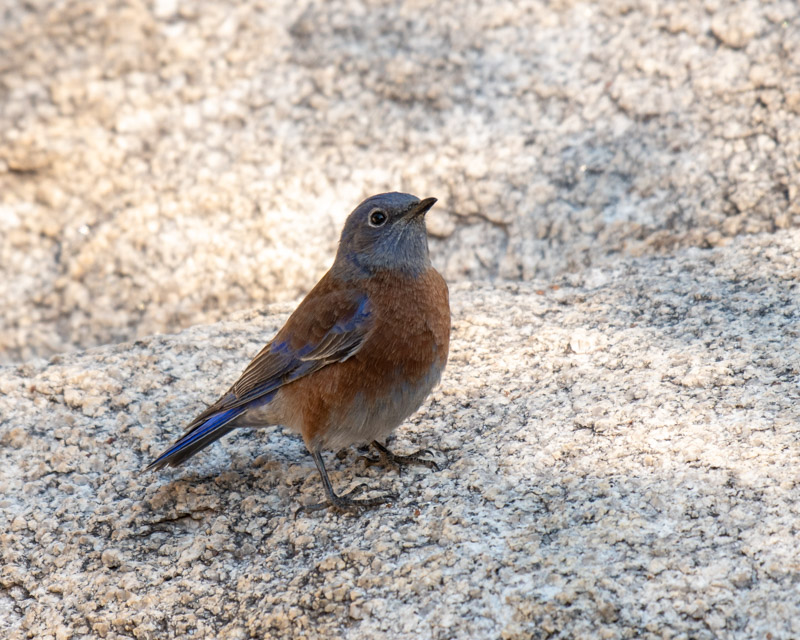
And this Western Bluebird is a male. Did you know that a blue bird does not actually have “blue” feathers despite what you are seeing? Here is the explanation: https://www.birdnote.org/listen/shows/why-are-bluebirds-blue
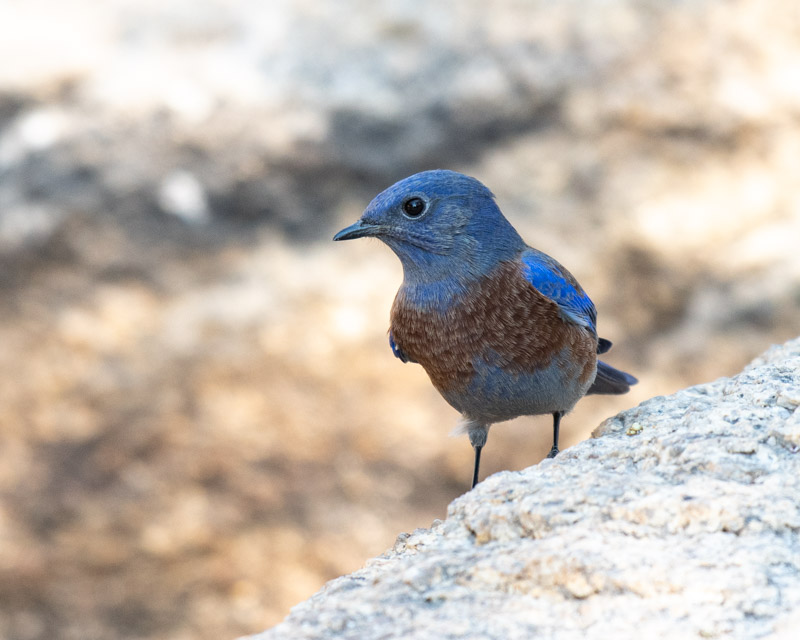
And just as I was ready to leave a Bridled Titmouse dropped by for a drink. These cute little birds with boldly striped faces have a small bill and a pointed crest. They are another bird that, within the United States, is unique to the mountains of Southern Arizona.
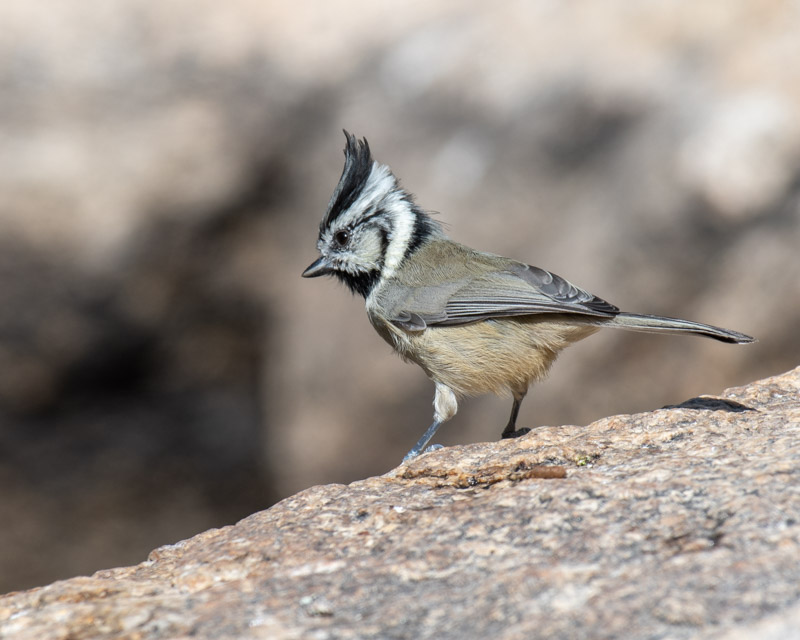
Next, higher up in the Catalinas, the leaves were changing and the forest had “eyes”.
